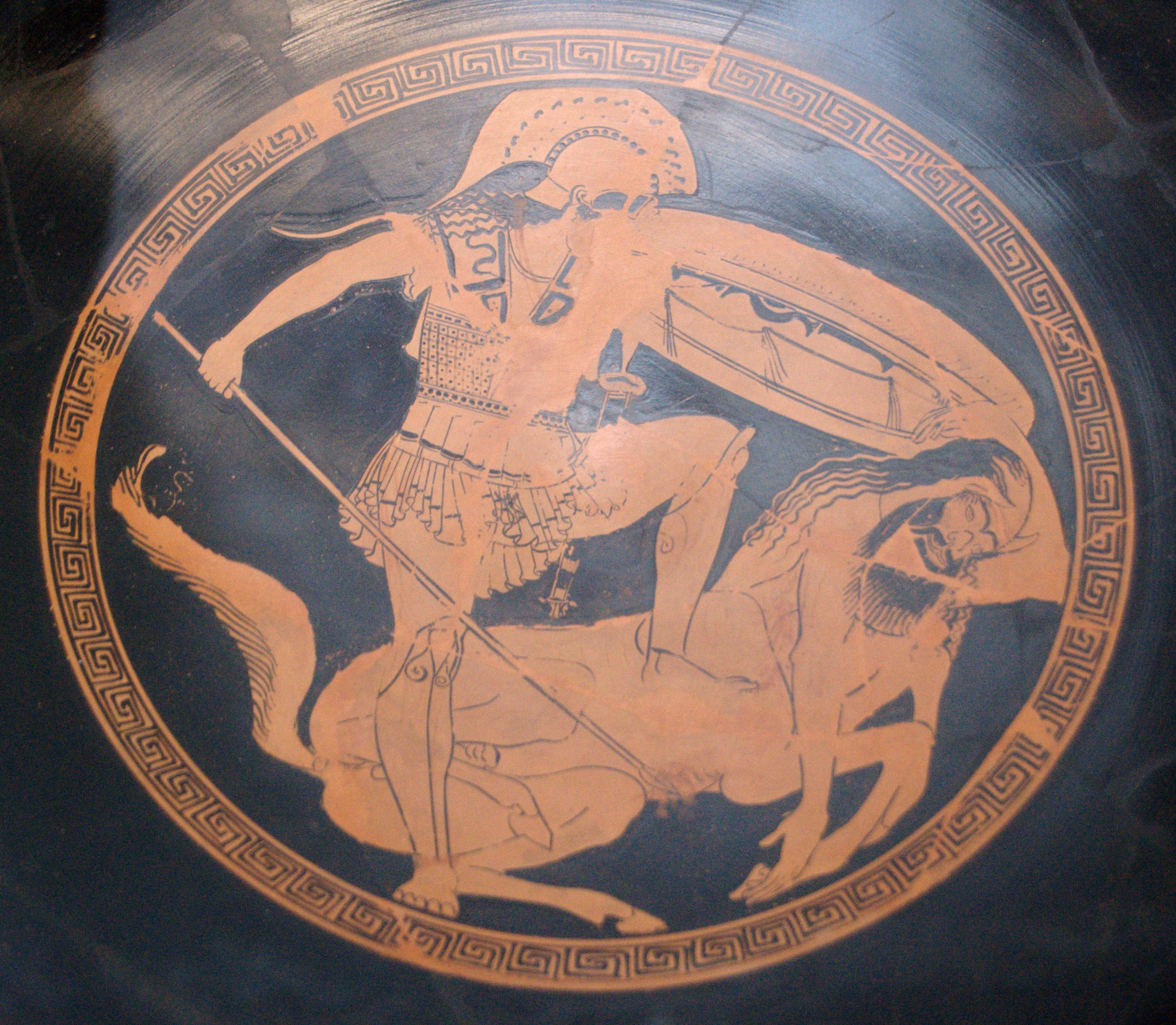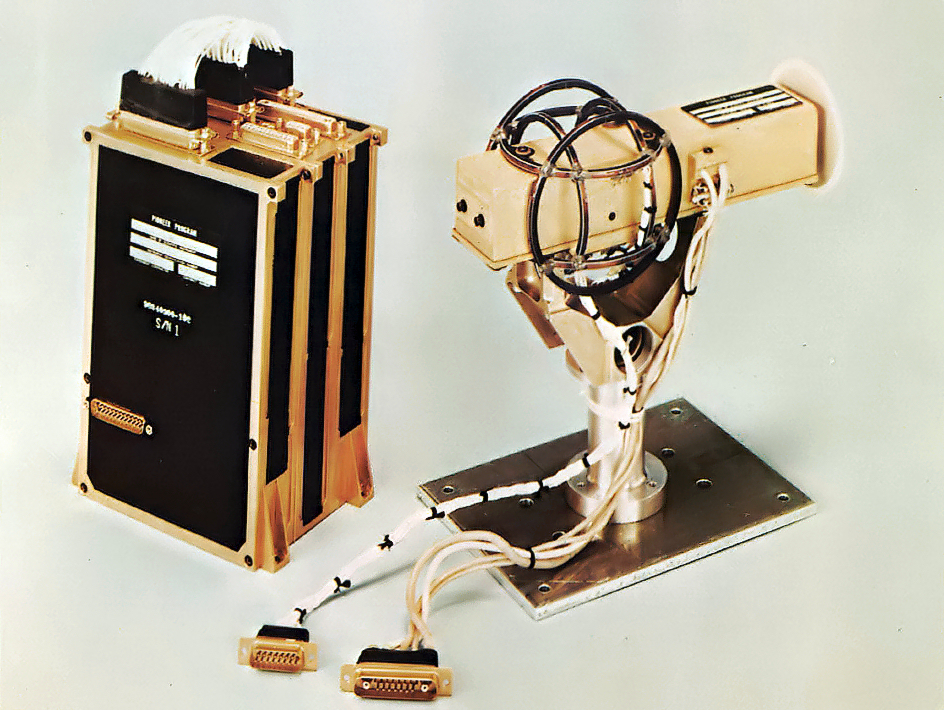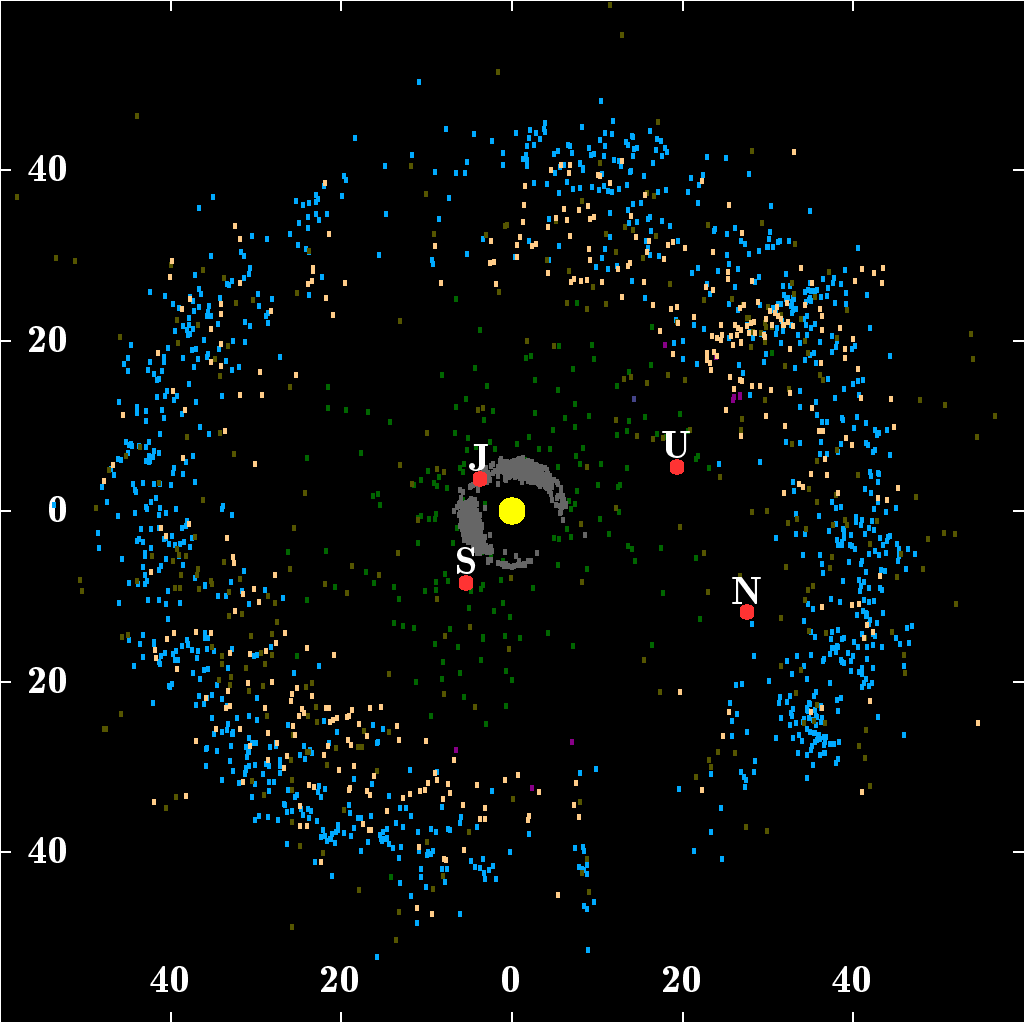|
Interstellar Express
''Interstellar Express'' or ''Interstellar Heliosphere Probe'' (), is the current name for a proposed Chinese National Space Administration program designed to explore the heliosphere and interstellar space. The program will feature two space probes that will purportedly be launched in 2024 and follow differing trajectories to encounter Jupiter to assist them out of the Solar System. The first probe, ''IHP-1'', will travel toward the nose of the heliosphere, while the second probe, ''IHP-2'', will fly near to the tail, skimming by Neptune and Triton in January 2038. There may be another probe—tentatively ''IHP-3''—which would launch in 2030 to explore to the northern half of the heliosphere. ''IHP-1'' and ''IHP-2'' would be the sixth and seventh spacecraft to leave the Solar System, as well as first non- NASA probes to achieve this status. History The heliosphere and the interstellar medium have so far been explored by only three NASA probes: '' Voyager 1'', '' Voya ... [...More Info...] [...Related Items...] OR: [Wikipedia] [Google] [Baidu] |
Chinese National Space Administration
China National Space Administration (CNSA; ) is the government agency of the People's Republic of China that is responsible for civil space administration and international space cooperation, including organizing or leading foreign exchanges and cooperation in the aerospace field. An administrative agency under the Ministry of Industry and Information Technology, its headquarters are located in Haidian, Beijing. Founded in 1993, CNSA has pioneered a number of achievements in space for China despite its relatively short history, including becoming the first space agency to land on the far side of the Moon with Chang'e 4, bringing material back from the Moon with Chang'e 5, and being the second agency who successfully landed a rover on Mars with Tianwen-1. As the governing body of civil space activities, China National Space Administration does not execute any space program. The China Aerospace Science and Technology Corporation executes China's state space programs instead. Th ... [...More Info...] [...Related Items...] OR: [Wikipedia] [Google] [Baidu] |
Pioneer 10
''Pioneer 10'' (originally designated Pioneer F) is an American space probe, launched in 1972 and weighing , that completed the first mission to the planet Jupiter. Thereafter, ''Pioneer 10'' became the first of five artificial objects to achieve the escape velocity needed to leave the Solar System. This space exploration project was conducted by the NASA Ames Research Center in California. The space probe was manufactured by TRW Inc. ''Pioneer 10'' was assembled around a hexagonal bus with a diameter parabolic dish high-gain antenna, and the spacecraft was spin stabilized around the axis of the antenna. Its electric power was supplied by four radioisotope thermoelectric generators that provided a combined 155 watts at launch. It was launched on March 3, 1972, at 01:49:00 UTC (March 2 local time), by an Atlas-Centaur expendable vehicle from Cape Canaveral, Florida. Between July 15, 1972, and February 15, 1973, it became the first spacecraft to traverse the asteroi ... [...More Info...] [...Related Items...] OR: [Wikipedia] [Google] [Baidu] |
Centaurs
A centaur ( ; grc, κένταυρος, kéntauros; ), or occasionally hippocentaur, is a creature from Greek mythology with the upper body of a human and the lower body and legs of a horse. Centaurs are thought of in many Greek myths as being as wild as untamed horses, and were said to have inhabited the region of Magnesia and Mount Pelion in Thessaly, the Foloi oak forest in Elis, and the Malean peninsula in southern Laconia. Centaurs are subsequently featured in Roman mythology, and were familiar figures in the medieval bestiary. They remain a staple of modern fantastic literature. Etymology The Greek word ''kentauros'' is generally regarded as being of obscure origin. The etymology from ''ken'' + ''tauros'', 'piercing bull', was a euhemerist suggestion in Palaephatus' rationalizing text on Greek mythology, ''On Incredible Tales'' (Περὶ ἀπίστων), which included mounted archers from a village called ''Nephele'' eliminating a herd of bulls that were the ... [...More Info...] [...Related Items...] OR: [Wikipedia] [Google] [Baidu] |
People's Republic Of China
China, officially the People's Republic of China (PRC), is a country in East Asia. It is the world's List of countries and dependencies by population, most populous country, with a Population of China, population exceeding 1.4 billion, slightly ahead of India. China spans the equivalent of five time zones and Borders of China, borders fourteen countries by land, the List of countries and territories by land borders, most of any country in the world, tied with Russia. Covering an area of approximately , it is the world's third List of countries and dependencies by area, largest country by total land area. The country consists of 22 provinces of China, provinces, five autonomous regions of China, autonomous regions, four direct-administered municipalities of China, municipalities, and two special administrative regions of China, Special Administrative Regions (Hong Kong and Macau). The national capital is Beijing, and the List of cities in China by population, most populous ci ... [...More Info...] [...Related Items...] OR: [Wikipedia] [Google] [Baidu] |
Electromagnetic Radiation
In physics, electromagnetic radiation (EMR) consists of waves of the electromagnetic (EM) field, which propagate through space and carry momentum and electromagnetic radiant energy. It includes radio waves, microwaves, infrared, (visible) light, ultraviolet, X-rays, and gamma rays. All of these waves form part of the electromagnetic spectrum. Classically, electromagnetic radiation consists of electromagnetic waves, which are synchronized oscillations of electric and magnetic fields. Depending on the frequency of oscillation, different wavelengths of electromagnetic spectrum are produced. In a vacuum, electromagnetic waves travel at the speed of light, commonly denoted ''c''. In homogeneous, isotropic media, the oscillations of the two fields are perpendicular to each other and perpendicular to the direction of energy and wave propagation, forming a transverse wave. The position of an electromagnetic wave within the electromagnetic spectrum can be characterized ... [...More Info...] [...Related Items...] OR: [Wikipedia] [Google] [Baidu] |
Magnetometer
A magnetometer is a device that measures magnetic field or magnetic dipole moment. Different types of magnetometers measure the direction, strength, or relative change of a magnetic field at a particular location. A compass is one such device, one that measures the direction of an ambient magnetic field, in this case, the Earth's magnetic field. Other magnetometers measure the magnetic dipole moment of a magnetic material such as a ferromagnet, for example by recording the effect of this magnetic dipole on the induced current in a coil. The first magnetometer capable of measuring the absolute magnetic intensity at a point in space was invented by Carl Friedrich Gauss in 1833 and notable developments in the 19th century included the Hall effect, which is still widely used. Magnetometers are widely used for measuring the Earth's magnetic field, in geophysical surveys, to detect magnetic anomalies of various types, and to determine the dipole moment of magnetic materials. In an ... [...More Info...] [...Related Items...] OR: [Wikipedia] [Google] [Baidu] |
COVID-19 Pandemic
The COVID-19 pandemic, also known as the coronavirus pandemic, is an ongoing global pandemic of coronavirus disease 2019 (COVID-19) caused by severe acute respiratory syndrome coronavirus 2 (SARS-CoV-2). The novel virus was first identified in an outbreak in the Chinese city of Wuhan in December 2019. Attempts to contain it there failed, allowing the virus to spread to other areas of Asia and later COVID-19 pandemic by country and territory, worldwide. The World Health Organization (WHO) declared the outbreak a public health emergency of international concern on 30 January 2020, and a pandemic on 11 March 2020. As of , the pandemic had caused COVID-19 pandemic cases, more than cases and COVID-19 pandemic deaths, confirmed deaths, making it one of the deadliest pandemics in history, deadliest in history. COVID-19 symptoms range from Asymptomatic, undetectable to deadly, but most commonly include fever, Nocturnal cough, dry cough, and fatigue. Severe illness is more likely ... [...More Info...] [...Related Items...] OR: [Wikipedia] [Google] [Baidu] |
Centaur (small Solar System Body)
In planetary astronomy, a centaur is a small Solar System body with either a perihelion or a semi-major axis between those of the outer planets (between Jupiter and Neptune). Centaurs generally have unstable orbits because they cross or have crossed the orbits of one or more of the giant planets; almost all their orbits have dynamic lifetimes of only a few million years, but there is one known centaur, 514107 Kaʻepaokaʻawela, which may be in a stable (though retrograde) orbit. Centaurs typically exhibit the characteristics of both asteroids and comets. They are named after the mythological centaurs that were a mixture of horse and human. Observational bias toward large objects makes determination of the total centaur population difficult. Estimates for the number of centaurs in the Solar System more than 1 km in diameter range from as low as 44,000 to more than 10,000,000. The first centaur to be discovered, under the definition of the Jet Propulsion Laboratory and the ... [...More Info...] [...Related Items...] OR: [Wikipedia] [Google] [Baidu] |
Weywot (moon)
Weywot, officially (50000) Quaoar I Weywot, is the only known moon of the trans-Neptunian planetoid 50000 Quaoar. Discovered by Michael Brown and T.A. Suer using images acquired by the Hubble Space Telescope on 14 February 2006, its existence was announced in an IAU Circular notice published on 22 February 2007. Weywot has an estimated diameter of (approximately 15% of its primary). The satellite was found at 0.35 arcseconds from Quaoar with an apparent magnitude difference of 5.6. Orbit Two possible orbits for Weywot have been determined from the observations: the first is a prograde orbit with an orbital inclination of 14 degrees, the second a retrograde orbit with an orbital inclination of 30 degrees (150 degrees); the other parameters are very similar between the two orbits. Weywot orbits at a distance of from Quaoar and has an orbital eccentricity In astrodynamics, the orbital eccentricity of an astronomical object is a dimensionless parameter that determines the ... [...More Info...] [...Related Items...] OR: [Wikipedia] [Google] [Baidu] |
Long March 5
Long March 5 (LM-5; zh, s=长征五号 , p=Chángzhēng wǔ hào), or Changzheng 5 (CZ-5), and also by its nickname "''Pang-Wu''" (胖五, "''Fat-Five''"), is a Chinese heavy-lift launch vehicle developed by the China Academy of Launch Vehicle Technology (CALT). It is the first Chinese launch vehicle designed to use exclusively non- hypergolic liquid propellants. It is the fifth iteration of the Long March rocket family. There are currently two CZ-5 variants: CZ-5 and CZ-5B. The maximum payload capacities are approximately to low Earth orbit (for CZ-5B) and approximately to geostationary transfer orbit (for CZ-5). As of 2021, a 3-core human-rated variant, referred to as CZ-5G, designed for manned moon mission, is under development; this variant will be capable of launching a crewed spacecraft into lunar orbit. The Long March 5 roughly matches the capabilities of American NSSL heavy-lift launch vehicles such as the Delta IV Heavy. It is currently the most powerful membe ... [...More Info...] [...Related Items...] OR: [Wikipedia] [Google] [Baidu] |
Long March 3B
The Long March 3B (, ''Chang Zheng 3B''), also known as the CZ-3B and LM-3B, is a Chinese orbital launch vehicle. Introduced in 1996, it is launched from Launch Area 2 and 3 at the Xichang Satellite Launch Center in Sichuan. A three-stage rocket with four strap-on liquid rocket boosters, it is currently the second most powerful member of the Long March rocket family after the Long March 5 and the heaviest of the Long March 3 rocket family, and is mainly used to place communications satellites into geosynchronous orbits. An enhanced version, the Long March 3B/E or G2, was introduced in 2007 to increase the rocket's geostationary transfer orbit (GTO) cargo capacity and lift heavier geosynchronous orbit (GEO) communications satellites. The Long March 3B also served as the basis for the medium-capacity Long March 3C, which was first launched in 2008. , the Long March 3B, 3B/E and 3B/G5 have conducted 82 successful launches, plus 2 failures and 2 partial failures, accumulating a su ... [...More Info...] [...Related Items...] OR: [Wikipedia] [Google] [Baidu] |
Cosmic Rays
Cosmic rays are high-energy particles or clusters of particles (primarily represented by protons or atomic nuclei) that move through space at nearly the speed of light. They originate from the Sun, from outside of the Solar System in our own galaxy, and from distant galaxies. Upon impact with Earth's atmosphere, cosmic rays produce showers of secondary particles, some of which reach the surface, although the bulk is deflected off into space by the magnetosphere or the heliosphere. Cosmic rays were discovered by Victor Hess in 1912 in balloon experiments, for which he was awarded the 1936 Nobel Prize in Physics. Direct measurement of cosmic rays, especially at lower energies, has been possible since the launch of the first satellites in the late 1950s. Particle detectors similar to those used in nuclear and high-energy physics are used on satellites and space probes for research into cosmic rays. Data from the Fermi Space Telescope (2013) have been interpreted as evi ... [...More Info...] [...Related Items...] OR: [Wikipedia] [Google] [Baidu] |




